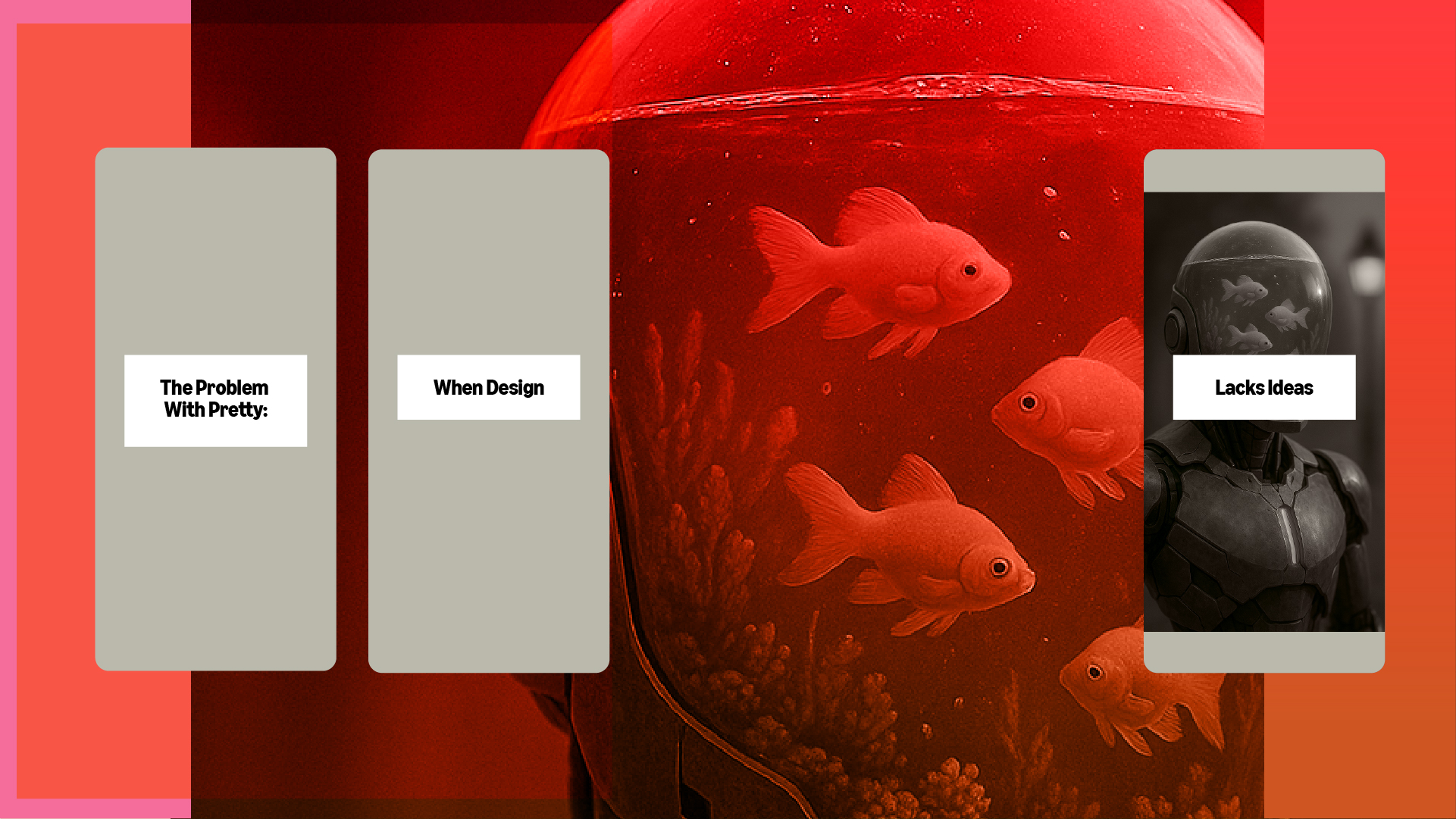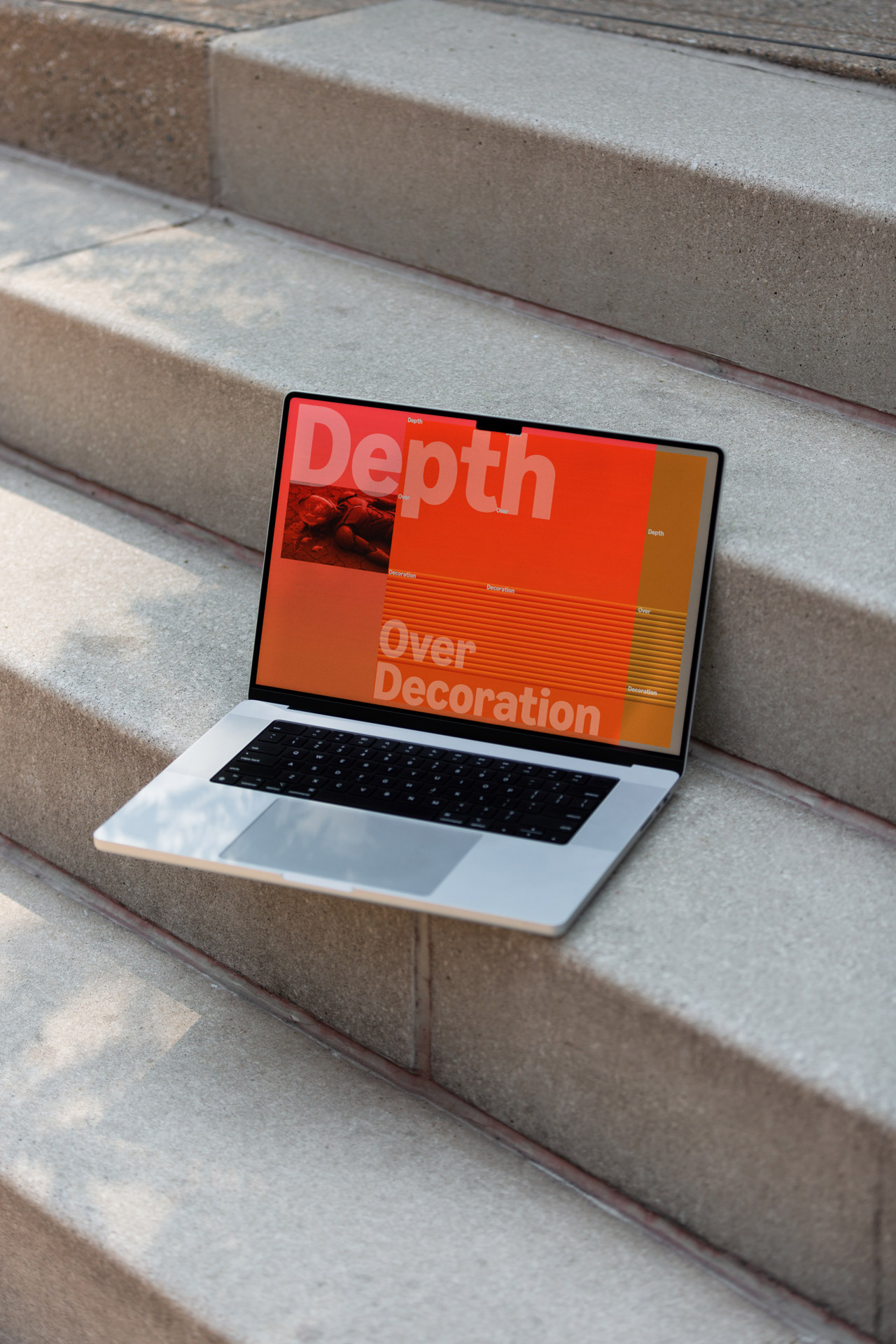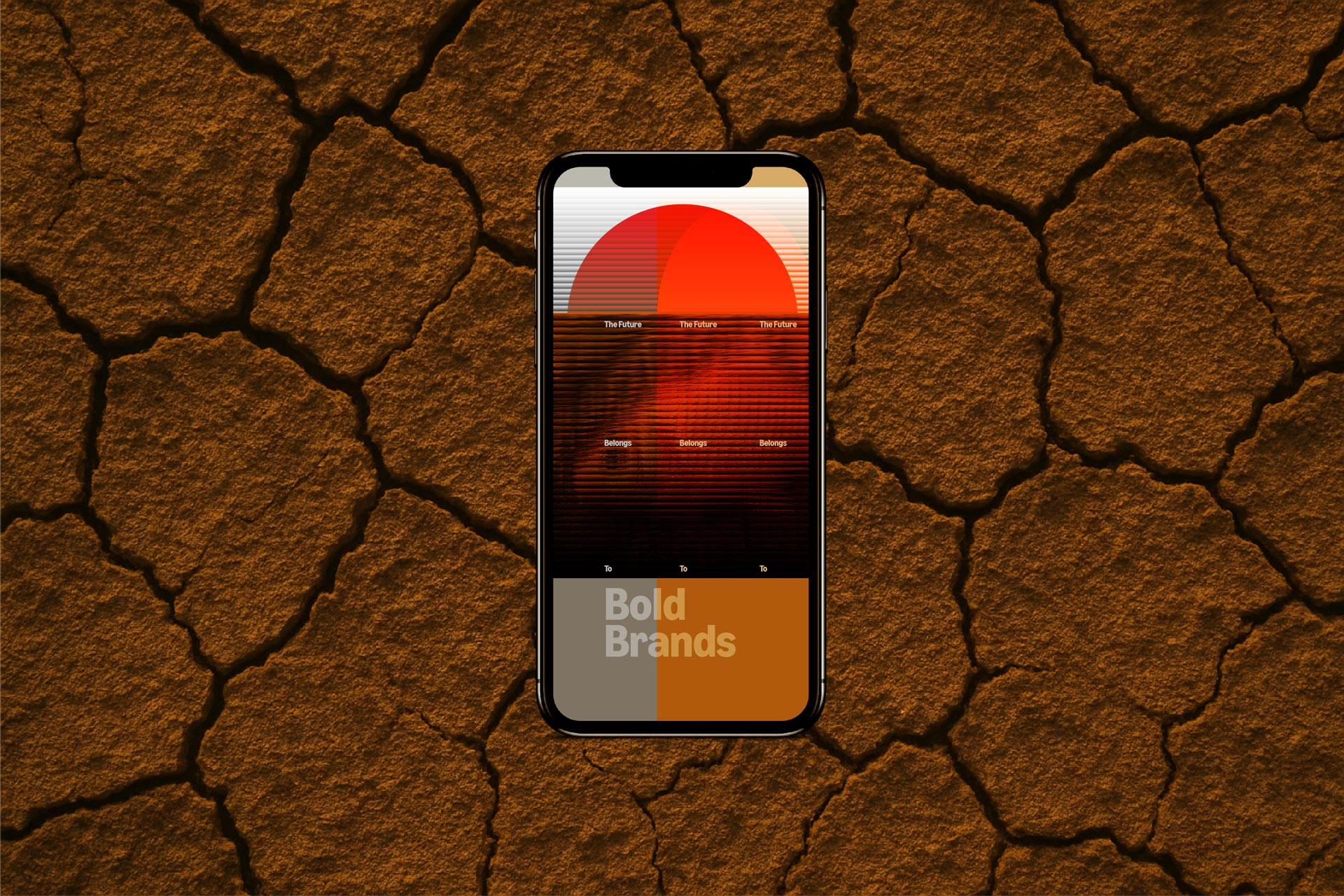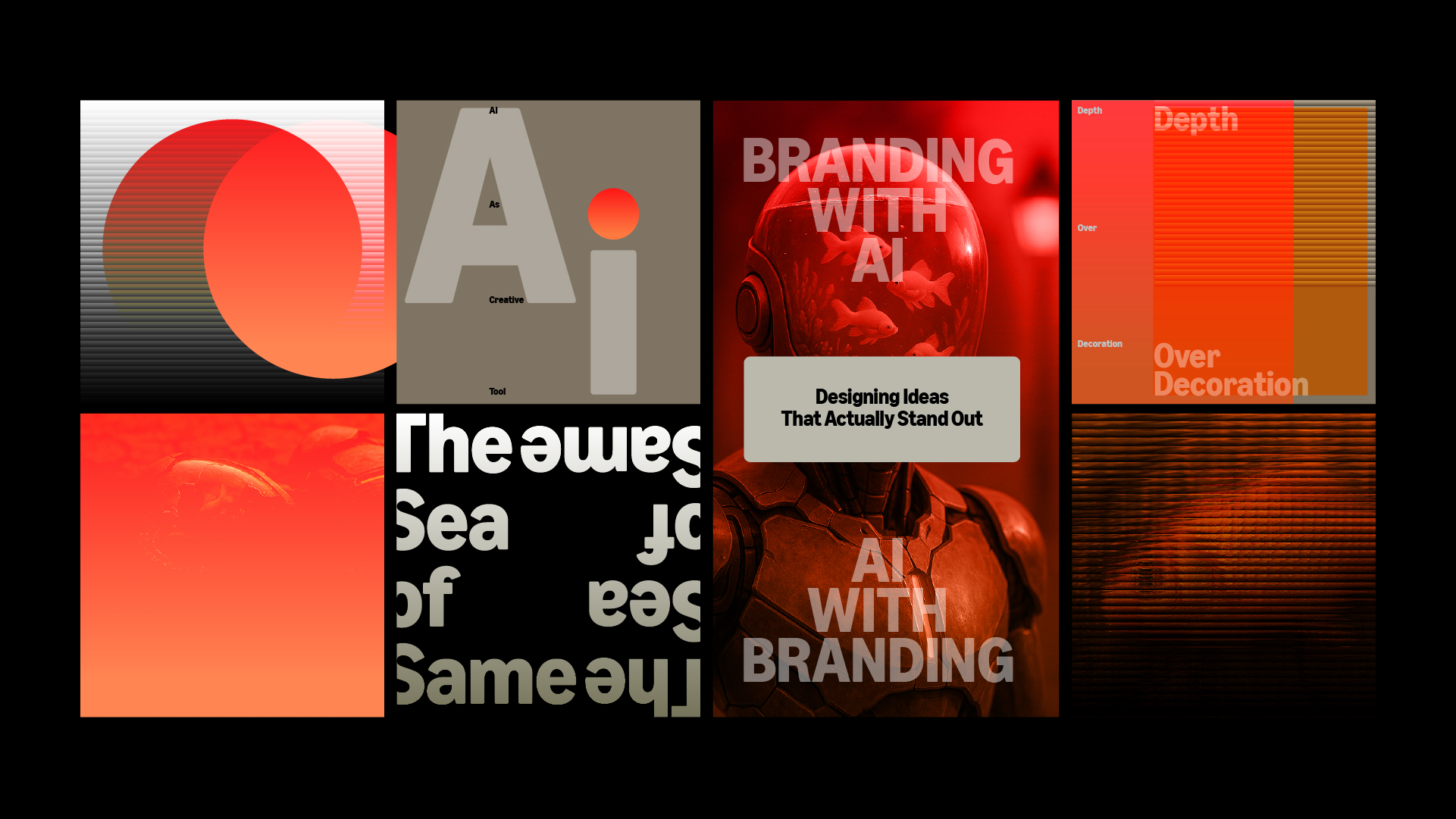If you’re feeling uninspired in the sea of AI-produced images, you’re not alone. The branding world is stuck in a loop—algorithmically optimized, endlessly recycled, and visually homogenous. Whether it’s millennial skincare, artisanal coffee, or neo-grotesque everything, sameness reigns.
But here’s the thing: brands don’t need more polish. They need more depth.
Today’s landscape, however, is no more bleak than at the invention of the computer: we’ve just put more powerful tools in more people’s hands and are living in the moment where everyone is testing out the propagation potential.
"Branding is crying out for innovation, for ideas, for a return to the depth and storytelling that once defined our industry." Laura Evans
AI, I might argue, isn’t the threat (even though it is mass copyright infringement). It’s the spark that a new generation of designers might need.

The Problem With Pretty: When Design Lacks Ideas
There’s a cultural loop we’re stuck in: trend-following mood boards, client-approved sameness, algorithmic feedback loops—each of these perpetuated by the AI snake eating its proverbial tail. And while there’s beauty in cohesion, there’s danger in homogeneity. Especially when category cues (those visual signals that say "this belongs here") start looking like carbon copies.
Take millennial skincare for example. You’ve seen it: pastel backdrops, soft radiance, neo-grotesque type that’s way too thin, and effervescent product names. All gorgeous on the shelf. All nearly identical. Or craft coffee: recycled bags, serif fonts, tan tones. “We’re source locally” (but ship it 3000 miles?) Visually compelling, yes—but hard to distinguish without a label.
In this climate, differentiation is no longer just a strategic checkbox. It’s a survival tactic. Clients know it. Consumers crave it. And designers? We need to be the ones who insist on it. If designers and marketers aren’t the ones to push for differentiation and an uncomfortable, opportunistic market space, who is?

Depth Over Decoration: Concept Comes First
At the heart of many-a-designer’s method is one transformative belief: the concept drives everything. Layouts, color palettes, even pack shape choices—they all stem from a core idea. Not just a vibe. Not just a tagline. But a cohesive, story-rich concept born from research, reflection, and imagination.
A brand project that has a more powerful driver might benefit from starting with a few different questions:
- What’s the emotional core?
- What’s the cultural context?
- What’s the story only this brand can tell?
These aren’t questions Midjourney or ChatGPT can answer on their own. But they can help you get there faster. The designer’s role in this regard gets closer to that of a curator than an artist.

Reclaiming AI as a Creative Tool
When the camera was invented, people thought painting was doomed. In fact the opposite is true: photography released painting of its commercial chains and opened up a new world of possibilities.
Designers should look at AI in a similar light.
Tools like ChatGPT, Claude, or Gemini can break creative deadlocks:
- Generate trend scans based on your target market
- Prompt cultural insights from non-obvious angles (ie, use it’s statistics in reverse)
- Ask, refine, and reframe positioning questions
Or a more linear method? Start with a topic. Introduce your goals. Then ask:
- What unique brand narrative can this concept own?
- What cultural trends intersect with this audience?
- How might design elements enhance or challenge expectations?
And don’t think of the AI regurgitation as final—they’re directional. They're jumping-off points. Inspiration triggers and deep-dive initiators.
We have to keep in mind that AI reflects what exists— designers supply what’s missing.

The Sea of Same Exercise
In some competitive analysis exercises (looking at you NBA and higher education), it can be useful to outline the sea of sameness. On a grid, lay out competitor logos in black and white. How many are crests? How many are circles? How many have more than one word? How many include the same iconography?
When clients see the visual repetition for themselves, they’re more likely to approve bolder creative. And when designers can show how their concept pulls away intentionally, the work becomes defensible, not just desirable.
A great example is Graza. Their squeezable, Siracha-inspired olive oil bottles have broken the luxury-oil mold by being playful, irreverent, and brightly branded—while retaining just enough category cues (green = olive) to remain legible. It’s that balance of recognition and rebellion that builds breakthrough brands.

The Future Belongs to Bold Brands that Break the Algorithms
There’s a difference between copying a trend and starting one. Between decorating a label and shaping a story. Between using AI to fill space—and using it to ignite imagination.
The case that brands of the future won’t just be seen—they’ll be felt comes from the notion that people will continue to seek humanity in every aspect of life. Brands won’t find sustained success because they were first to market after a heavy AI push—but because they were first to mean something to people.


